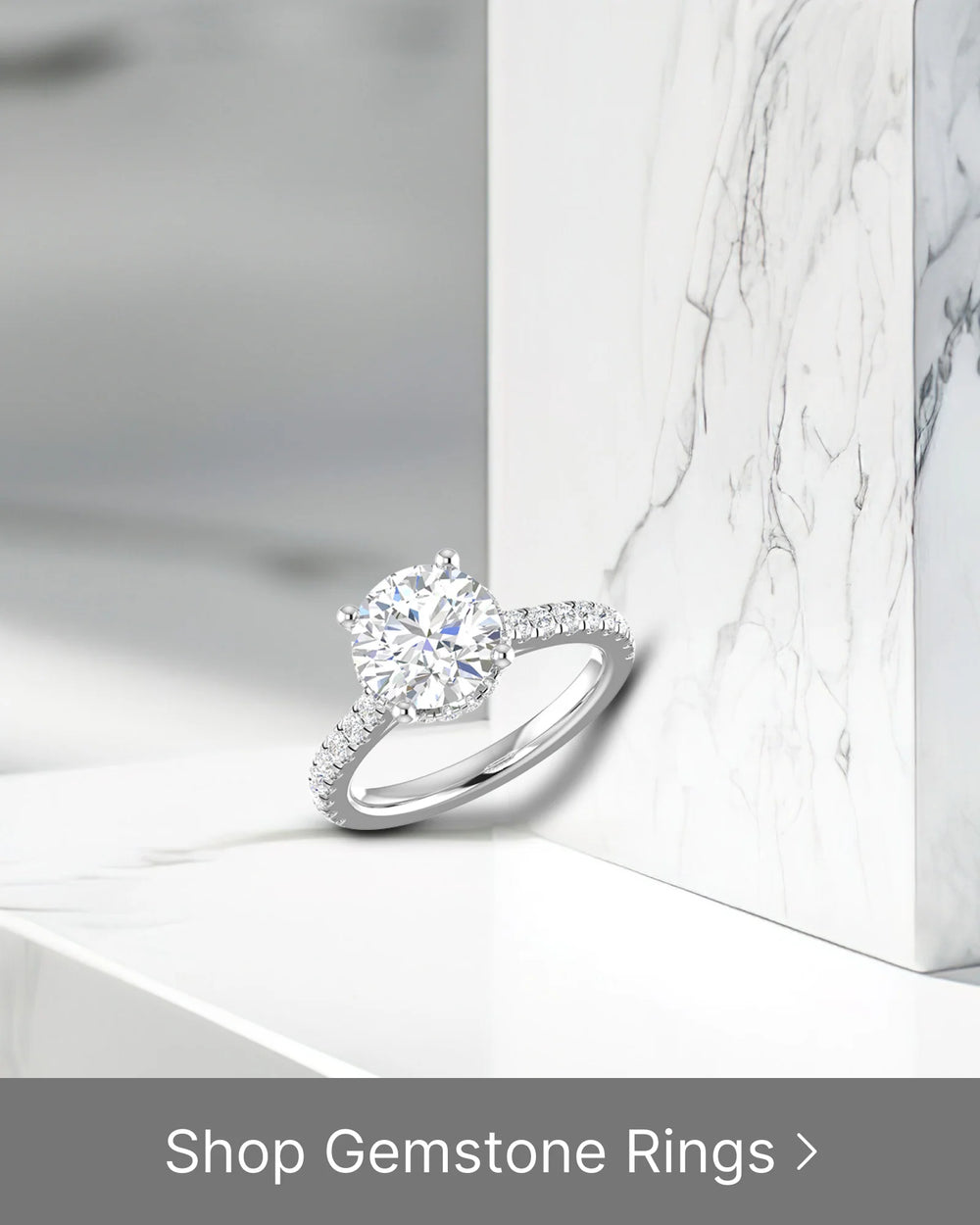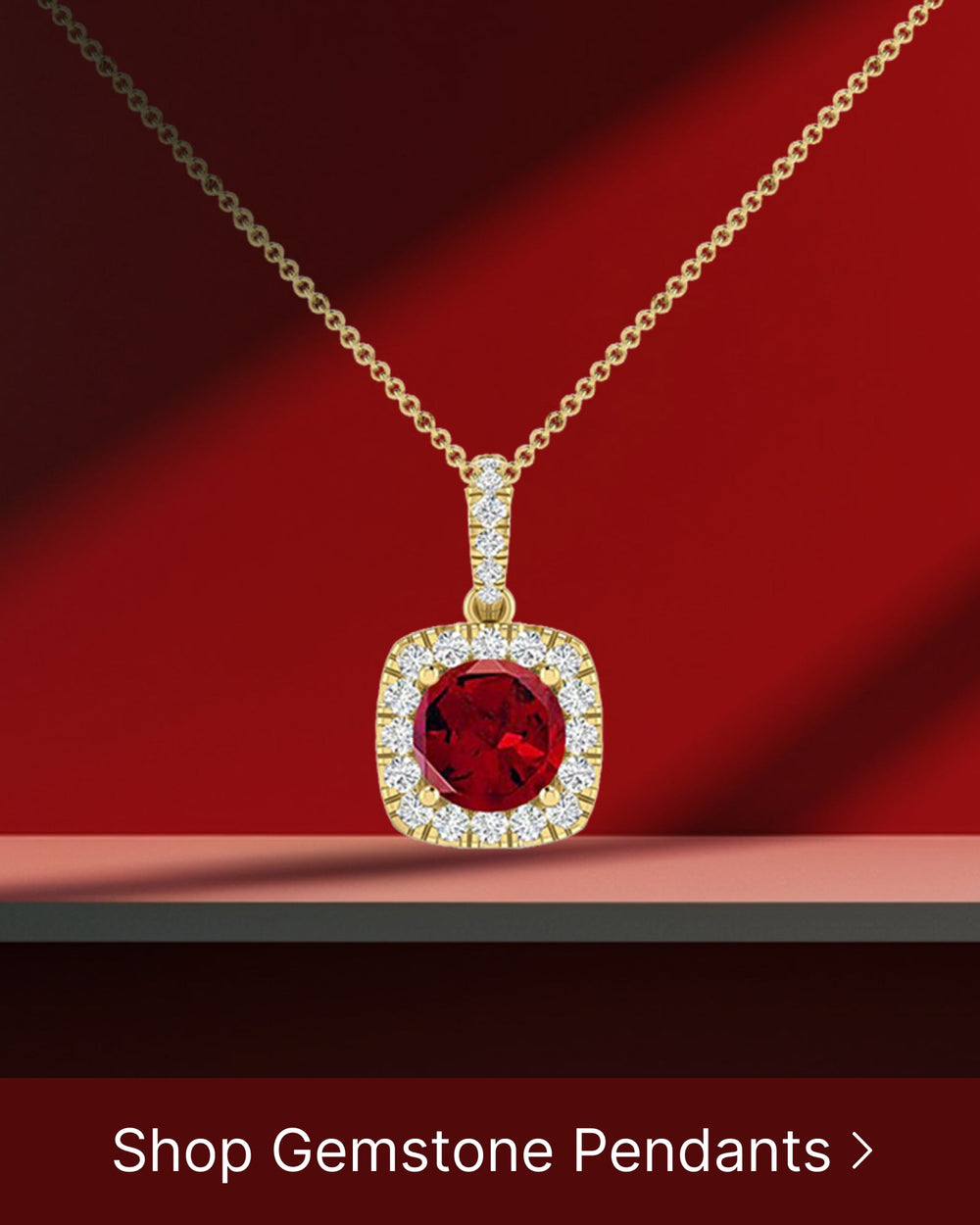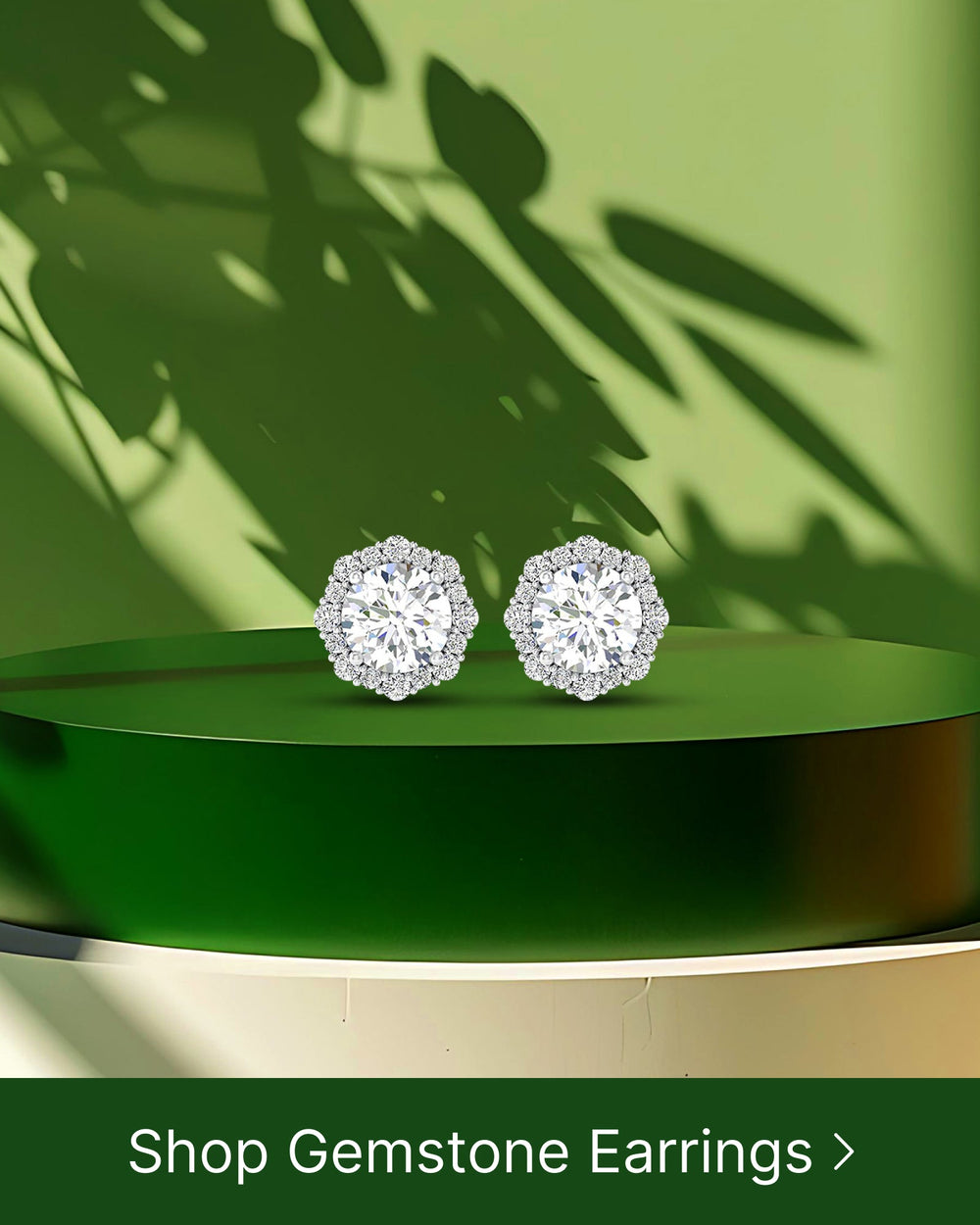Jewelry has always been a symbol of elegance and personal style. When it comes to selecting the perfect piece, one of the most important factors to consider is the carat size. Carat size not only determines the weight of a gemstone or diamond but also affects its appearance and value. In this article, we will explore the different carat sizes in jewelry, understand their significance, and debunk common misconceptions surrounding them.
The Basics of Carat Size in Jewelry
Defining Carat and Its Importance
Carat is a unit of measurement used to gauge the weight of gemstones and diamonds. It is derived from the carob tree's seed, which was originally used as a counterbalance on scales. Over time, the carat became standardized and is now universally accepted as the measurement unit for gemstones.
Carat size plays a crucial role in determining the value of a piece of jewelry. As a general rule, larger carat sizes are more rare and therefore more valuable. However, there are other factors to consider when assessing the overall worth of a piece, such as color, clarity, and cut.
The History of Carat Measurement
The history of carat measurement dates back thousands of years. In ancient civilizations, like the Egyptians, carob seeds were used to measure the weight of gemstones. This early method ensured fairness and accuracy in trade. As civilizations advanced, the carat size calculation became more precise, leading to the standardized system we use today.
It is fascinating to think that a unit of measurement established centuries ago still holds great importance in the world of jewelry today.
The Relationship Between Carat Size and Jewelry Value
When it comes to jewelry, one of the most significant factors that affect its value is the carat size. Carat size refers to the weight of a gemstone or diamond, and it plays a crucial role in determining its price. It is no surprise that larger carat sizes are generally more valuable because they are rarer and harder to find.
However, it is important to note that carat size is not the only factor that determines the price of jewelry. Other factors, such as the overall quality and desirability of the gemstone or diamond, also come into play. A smaller diamond with exceptional cut, color, and clarity may be more valuable than a larger diamond with lower quality characteristics.
When evaluating the value of a piece of jewelry, it is crucial to consider the combination of factors that contribute to its perceived worth. While carat size is undoubtedly significant, it is not the sole determinant of a piece's value.
Carat Size and Perceived Quality
There is a common misconception that bigger is always better when it comes to carat size. Many people believe that a larger stone automatically indicates better quality. However, this is not necessarily true.
The perceived quality of a gemstone or diamond is determined by various factors beyond carat size. One of the most important aspects is the overall appearance of the stone. Factors such as brilliance, color, and clarity play a significant role in determining its visual appeal and perceived value.
It is not uncommon to find a smaller stone with exceptional characteristics that are more valuable and visually appealing than a larger stone with lesser quality attributes. The brilliance and sparkle of a gemstone can captivate the eye and create a stunning visual effect, regardless of its carat size.
Therefore, when selecting jewelry, it is essential to consider various factors beyond carat size. Each individual has unique preferences and style, and it is important to choose a piece that aligns with your personal taste and desired aesthetic.
In conclusion, while carat size does have a direct impact on the price of jewelry, it is not the sole determinant of its value. The overall quality, desirability, and perceived worth of a piece are influenced by a combination of factors, including carat size, cut, color, and clarity. By considering these aspects, you can make an informed decision when purchasing jewelry that suits your personal style and preferences.
Different Carat Sizes in Various Types of Jewelry
Carat Sizes in Diamond Jewelry
Diamonds are perhaps the most coveted gemstones in the world of jewelry. They come in various carat sizes, ranging from small accent stones to larger centerpiece diamonds. The carat size you choose for your diamond jewelry will depend on your personal style and budget.
When it comes to diamond jewelry, the carat size not only affects the appearance but also the value of the piece. Larger carat diamonds are generally more expensive and can make a bolder statement. However, smaller carat diamonds can still be stunning and offer a delicate and elegant look.
It's important to consider the overall design of the jewelry when choosing the carat size. For example, a dainty diamond pendant may look best with a smaller carat diamond, while an extravagant engagement ring may call for a larger carat diamond to create a dazzling centerpiece.
Carat Sizes in Gold Jewelry
When it comes to gold jewelry, carat refers to the purity of the gold rather than the weight of a gemstone. Gold is measured in karats, with 24 karat gold being pure gold. However, gold used in jewelry is often alloyed with other metals for durability and practicality.
Commonly used gold alloys in jewelry include 18k, 14k, and 10k, indicating the percentage of pure gold in the composition. While carat size does not directly apply to gold jewelry in the same sense as gemstone jewelry, the karat purity still plays a role in determining the value and quality of the piece.
When choosing gold jewelry, it's important to consider both the carat purity and the design of the piece. Higher karat gold, such as 18k, is more valuable and has a richer color, but it may also be softer and more prone to scratches. Lower karat gold, such as 10k, is more durable but has a slightly paler color.
Additionally, the carat size of any gemstones set in the gold jewelry can also impact the overall appearance. A larger carat gemstone may create a more eye-catching and luxurious look, while smaller carat gemstones can offer a delicate and subtle touch.
Carat Sizes in Gemstone Jewelry
Gemstone jewelry offers a vast array of options, from vibrant sapphires to mesmerizing emeralds. The carat size of gemstone jewelry can vary significantly depending on the gemstone and its availability. Popular gemstone jewelry pieces, such as statement rings and pendant necklaces, often feature varying carat sizes.
When it comes to gemstone jewelry, the carat size can greatly impact the visual impact of the piece. Larger carat gemstones can create a bold and dramatic look, while smaller carat gemstones offer a more delicate and understated appearance.
It's important to consider the color and clarity of the gemstone when choosing the carat size. Some gemstones, such as emeralds, may have natural inclusions that are more visible in larger carat sizes. On the other hand, gemstones with vibrant colors, like sapphires, can make a striking statement even in smaller carat sizes.
Ultimately, the choice of carat size in gemstone jewelry largely depends on personal preference and the desired impact of the piece. Some individuals may prefer smaller, delicate gemstones for everyday wear, while others opt for more substantial carat sizes to make a bold statement for special occasions.
Choosing the Right Carat Size for You
Factors to Consider When Choosing Carat Size
When selecting jewelry, it is crucial to consider various factors beyond carat size alone. These factors include personal style, budget, the type of jewelry, and even the occasion for which the piece is intended.
For example, if you are choosing an engagement ring, you may consider your partner's preferences, lifestyle, and the overall aesthetic you wish to achieve. Similarly, if you are purchasing a pendant necklace for everyday wear, you may opt for a more modest carat size that perfectly complements your personal style.
Ultimately, the right carat size for you is a combination of objective considerations and personal preferences.
Understanding Carat Size and Personal Style
Your personal style plays a significant role when it comes to choosing the right carat size for your jewelry. Some individuals prefer understated elegance and may opt for smaller carat sizes that seamlessly blend with their overall look. On the other hand, some people embrace bold statements and gravitate towards larger carat sizes that demand attention.
Understanding your personal style and how you want to express yourself through your jewelry will guide you in selecting the perfect carat size that aligns with your unique aesthetic.
Misconceptions About Carat Size
Debunking Common Myths
Carat size is surrounded by various misconceptions that can influence jewelry buying decisions. One common myth is that bigger is always better when it comes to carat size. However, as we have previously discussed, factors such as quality and personal preferences play a significant role in determining the value and appeal of a piece.
Another misconception is that carat size directly correlates with brilliance. While larger carat sizes can enhance the visual impact of a gemstone or diamond, brilliance depends on various factors, including cut, color, and clarity, rather than sheer size alone.
The Truth About Carat Size and Brilliance
To emphasize the point, it is important to recognize that brilliance is primarily influenced by the quality of the stone, including its cut, color, and clarity. Even a smaller diamond with exceptional attributes can exhibit remarkable brilliance, while a larger diamond with lesser quality characteristics may not sparkle as brilliantly.
When considering carat size, it is crucial to appreciate the interplay between size and overall quality for the most dazzling jewelry piece.
In conclusion, understanding different carat sizes in jewelry is crucial when selecting the perfect piece that aligns with your personal style and budget. Carat size, although significant, is just one factor among many that contribute to a piece's desirability and value. By considering various elements, debunking misconceptions, and appreciating the relationship between carat size and overall quality, you can embark on your jewelry journey with confidence and make informed decisions.





